

Max Davies
2026 GWM Cannon Ultra review
6 Days Ago
It's not quite a full-blown N car, but the Sonata N Line is no slouch, whether you're launching out of the blocks, or carving up a B-road.

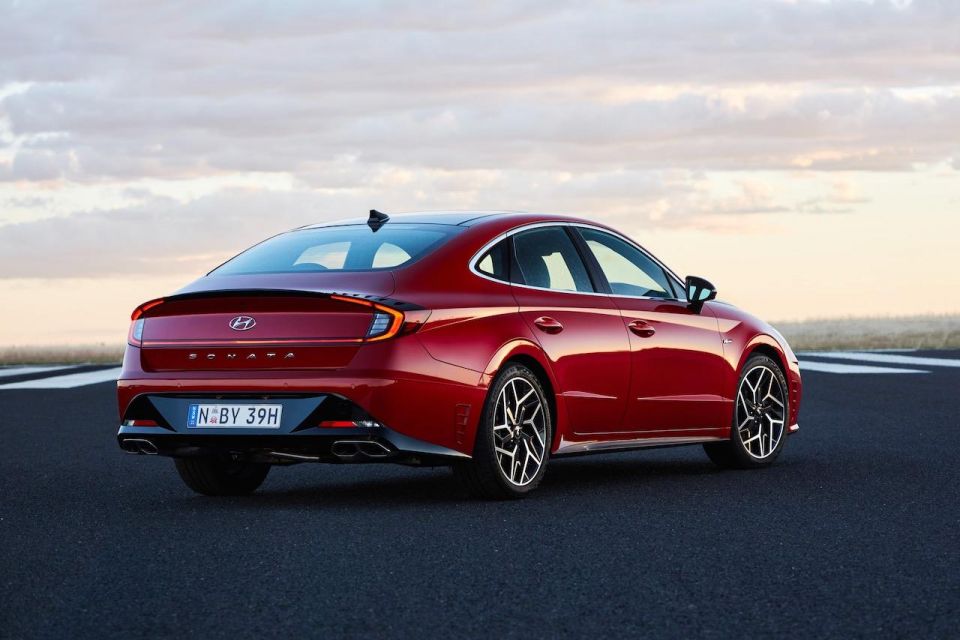

Senior Road Tester
New from
$50,990
excl. on-roads

Senior Road Tester
New from
$50,990
excl. on-roads


Senior Road Tester
New from
$50,990
excl. on-roads

Senior Road Tester
New from
$50,990
excl. on-roads
Quickly see how this car stacks up against its competition. Select any benchmark to see more details.
Where expert car reviews meet expert car buying – CarExpert gives you trusted advice, personalised service and real savings on your next new car.
Sales of mid-sized sedans have been tanking for more than a few years, with little or no signs of redemption, so you’ve got to wonder why a manufacturer like Hyundai would launch a brand new Sonata in a market as small as Australia, when it can barely keep up supply of its SUVs to a ready and willing market.
But, this 2021 Hyundai Sonata is a little different. Not only is it an all-new eighth-generation version, it wears sporty N Line badge for the first time, which means it will likely appeal to even fewer buyers.
Apparently, the combination of the Sonata N Line’s ultra-modern styling, cutting-edge technology, and performance-tuned drivetrain was too good to refuse.
Armed with a 2.5-litre turbo engine knocking out 213kW of power and 422Nm of torque, with looks to rival high-end Euro fastbacks costing twice the price, there might just be method in this kind of madness.

The Sonata is classed in the mid-size segment, but in reality it measures 4.9 metres long which is similar to the eight-seat Palisade. As such it offers a stack of passenger and luggage space.
Where larger markets get the choice of less powerful petrols and a petrol-electric hybrid, Hyundai Australia is only taking the top-of-the-line petrol model after initially promising several variants.
It’s an undeniably good-looking thing, but will it be enough to sway the stampede of buyers away from the plethora of high-riding family chariots on offer these days?
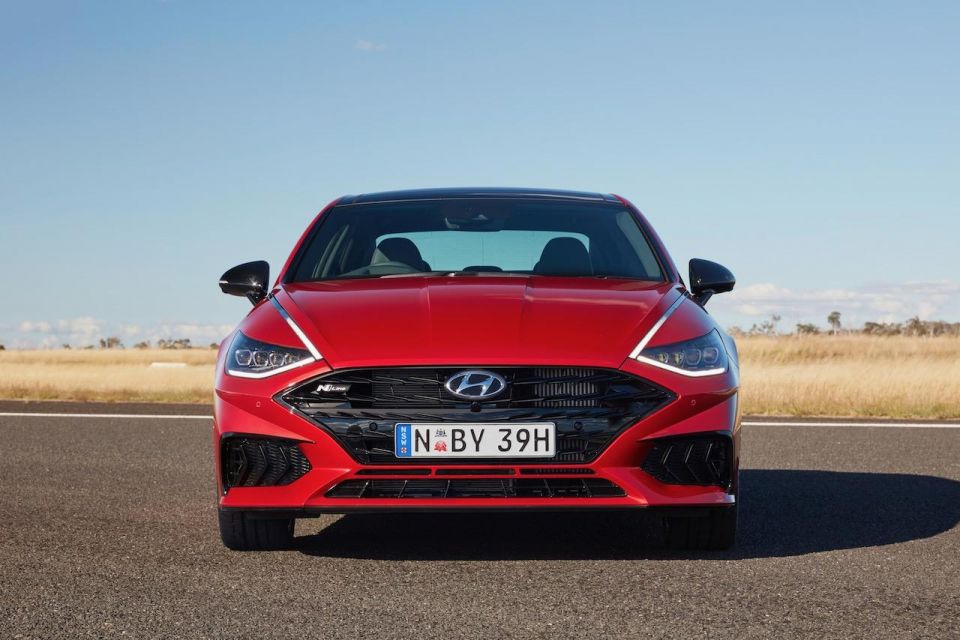
Pricing for the 2021 Hyundai Sonata N Line starts at $50,990 before on-road costs. The one-and-only option is metallic/mica paint, priced at $595
Direct rivals are almost non-existent, but we’d put the Skoda Octavia RS ($51,490 drive-away) up as the Sonata’s closest competitor. To be anywhere near on par with the Hyundai as far as equipment goes, buyers need to add the Premium Pack ($6500) – making it more expensive and less powerful.
Skoda also offers the Superb 206TSI Sportline liftback, but at $62,990 drive-away it’s considerably more expensive than the Hyundai.
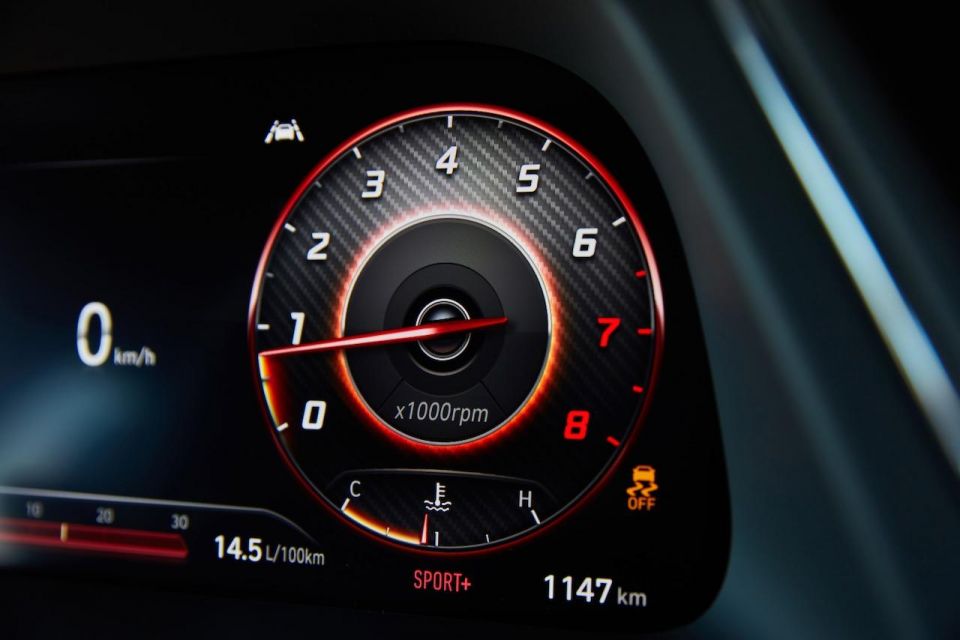
Kia has the four-pot Stinger GT-Line turbo petrol with loads of kit, but with a sticker nudging $58,000 excluding on-roads and less grunt, it’s not nearly in the ballpark.
Toyota’s Camry SL V6 is no more for 2021, once priced from $45,290 plus on-roads. While it made a bit more power from its larger 3.5-litre V6, it was well down on torque (224kW/362Nm) and not nearly as sporty as the Sonata N Line.
Mazda has the 6 Atenza priced at $50,090 plus on-roads, powered by a 2.5-litre turbo-four petrol making 170kW and 420Nm, but again, it’s not skewed towards any kind of enthusiast market.
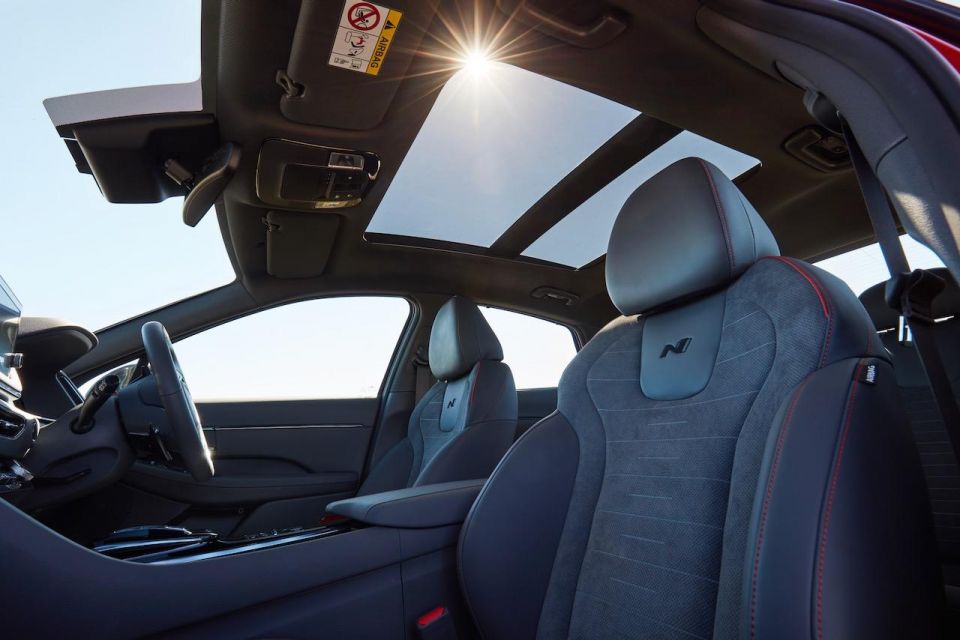
Buy your new car without the stress. It's fast, simple and completely free.

Great service from Travis and team, second time I have used this business would not hesitate to recommend them to anyone
Craig C.
Purchased a Ford Ranger in Sunshine Coast, QLD
CarExpert helped Craig save $7,224 on his Ford Ranger, now let us save you on your next new car.
Get your BEST priceEverything but the kitchen sink, seriously.
The list of equipment in the new Sonata N Line is three pages long in small print, and it’s chock full of the good stuff.
Big ticket items include combination suede/Nappa leather upholstery, sports bucket seats, a Bose 12-speaker audio system, keyless entry and start, a 12.3-inch LED instrument cluster, a 10.25-inch infotainment touchscreen with satellite navigation, heated/ventilated front seats, heated rear outboard seats, a 12-way power driver’s seat with memory, and a four-way electric front passenger seat.
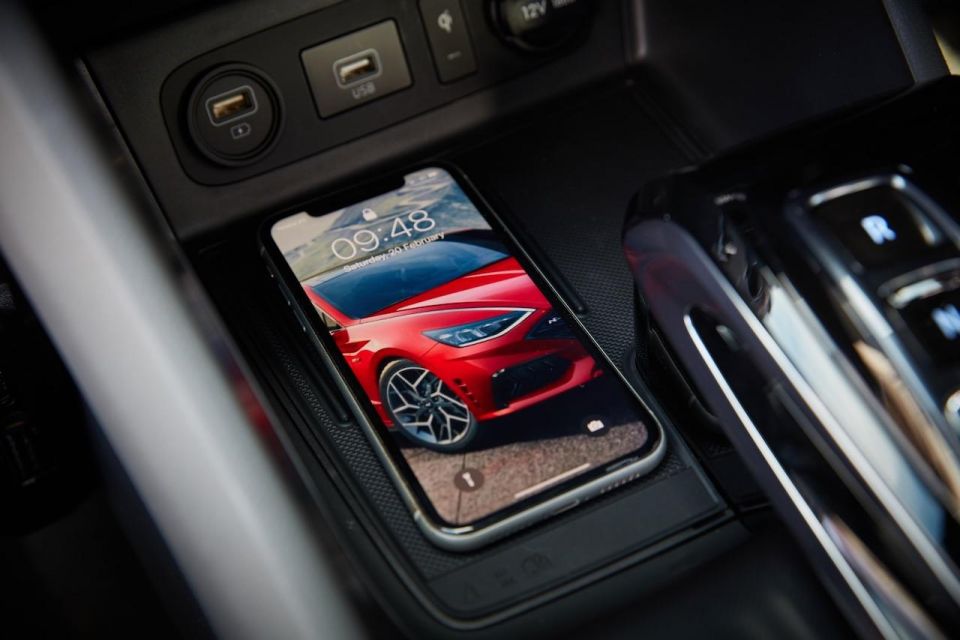
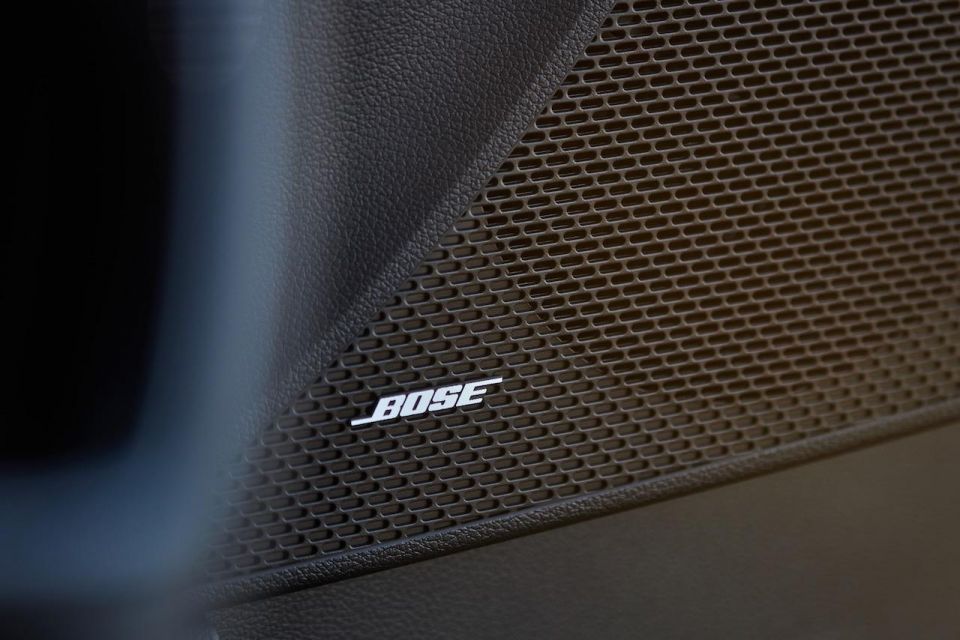
There’s dual-zone climate control with rear vents, 19-inch alloy wheels, front and rear parking sensors, bi-LED headlights, LED daytime running lights and tail lights, power rear windshield curtain (with manual rear window blinds), wireless phone charging, a panoramic dual-panel sunroof, surround-view cameras, and an electrochromatic rear-view mirror.
Additionally, the Sonata comes with an N Line body kit, quad-look exhaust tips, heated auto-folding door mirrors with memory, auto headlights and rain-sensing wipers, an electric boot lid, a heated steering wheel, a head-up display, wired Apple CarPlay and Android Auto, and DAB+ digital radio.
Pretty well equipped, we’d say.
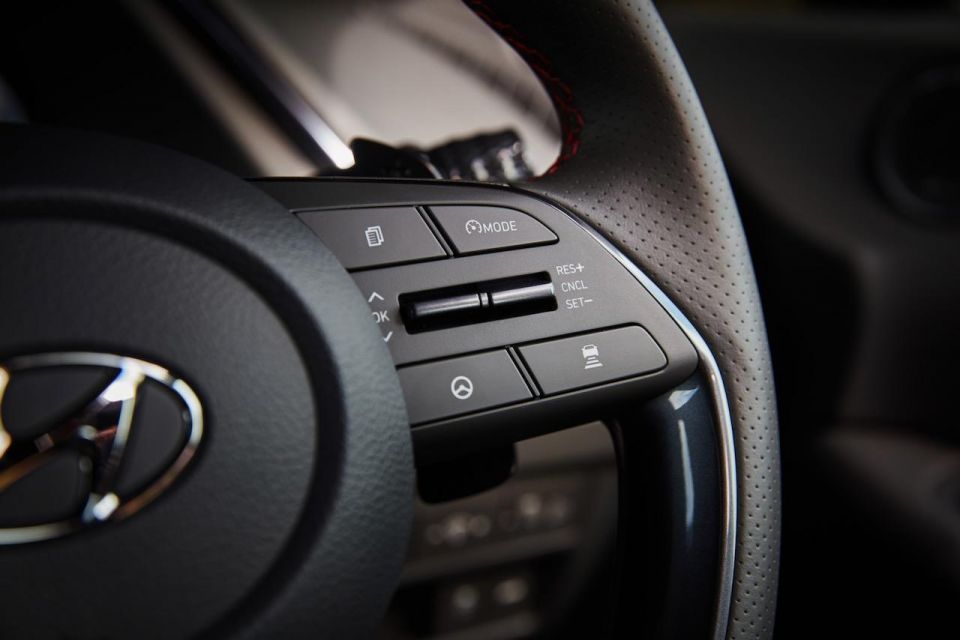
To date, the all-new Sonata has not been crash tested by ANCAP and is not sold in Europe, so there’s no Euro NCAP rating.
In the United States, it has received a 2021 ‘Top Safety Pick’ from the Insurance Institute for Highway Safety (IIHS), which is the equivalent auto safety body.
That’s because the Sonata gets a raft of active safety systems as part of Hyundai’s standard suite, dubbed SmartSense, which includes forward collision avoidance assist (AEB) with junction turning assist as well as pedestrian/cyclist detection, driver attention warning, and blind-spot collision avoidance assist.
The latest-generation Sonata also features, rear cross-traffic collision avoidance assist, lane following assist and adaptive cruise control with stop/go.

The Sonata N Line is nicely appointed, with the suede/leather upholstery offering a premium look and feel throughout the entire cabin.
The sports bucket seats are superbly designed with extra cushioning and extensive side-bolsters, while the Nappa leather extends to the embroidered head rests and centre-console bin.
The gunmetal accents herald the sporty intentions of the N Line badge, but also look a cut above the norm, and there are plenty of them.
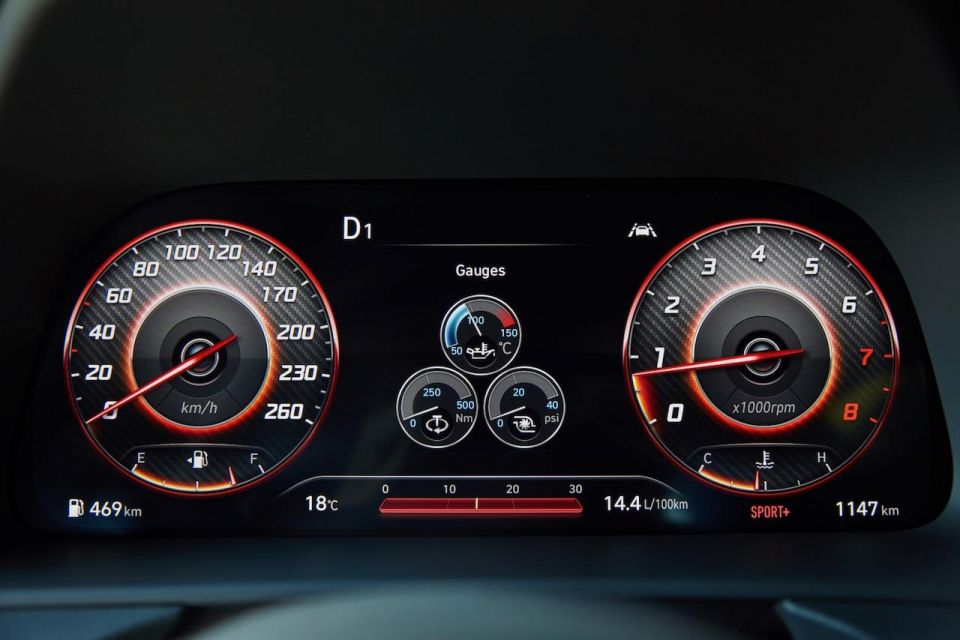
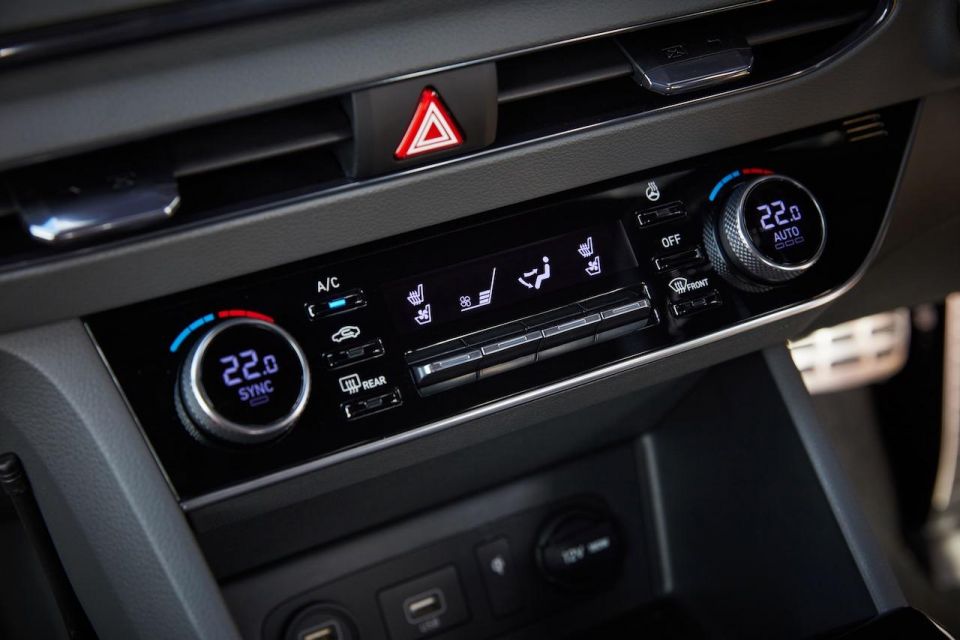
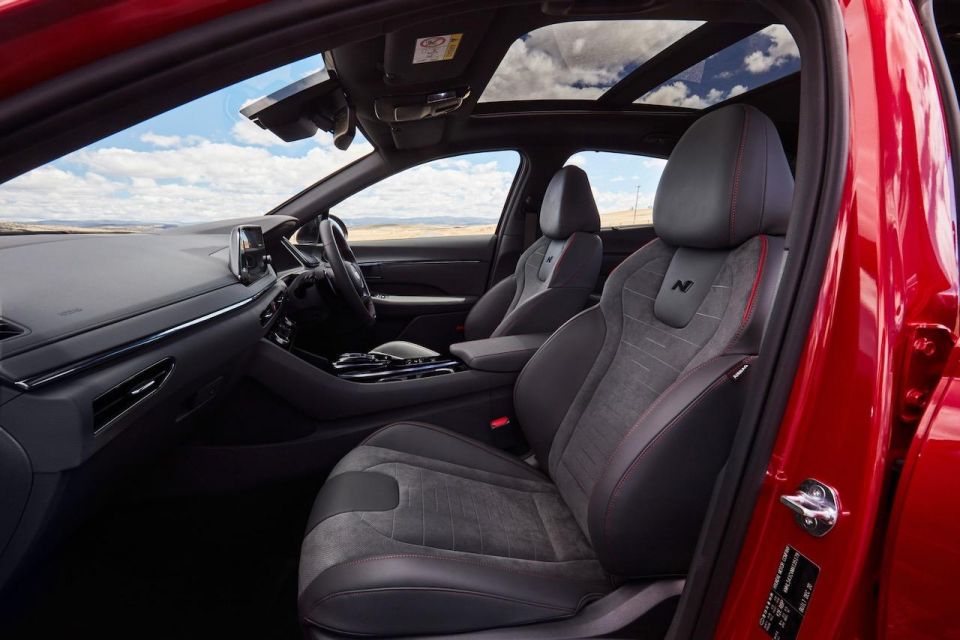
We also like the round sports steering wheel, which has a nicely-sized rim and thickness, but with the contrast stitching and inset N Line badge it looks and feels quite special.
The centre console is largely uncluttered, thanks to the shift-by-wire selector replacing a traditional lever. There’s also plenty of piano black, but it’s tasteful and blended with more gunmetal trim for more of a premium look.
The 12.3-inch digital instrument display feels huge, with a menu to customise the graphics depending on which drive mode is selected, with the available sports readouts suiting the N Line’s personality perfectly.
Same goes for the central infotainment screen. At 10.25 inches it’s more than big enough, while the colour and clarity is first rate as are response times.
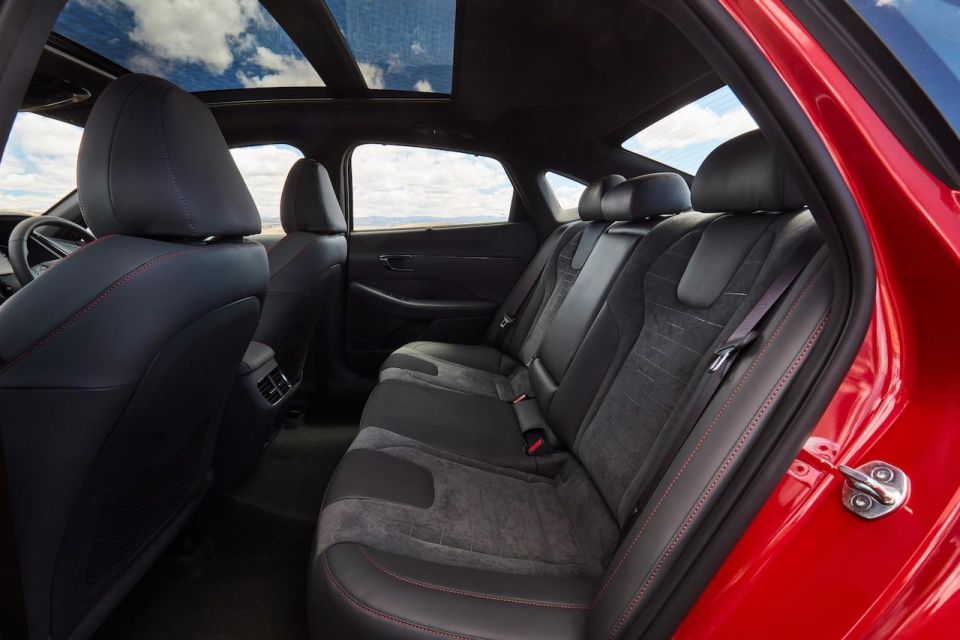
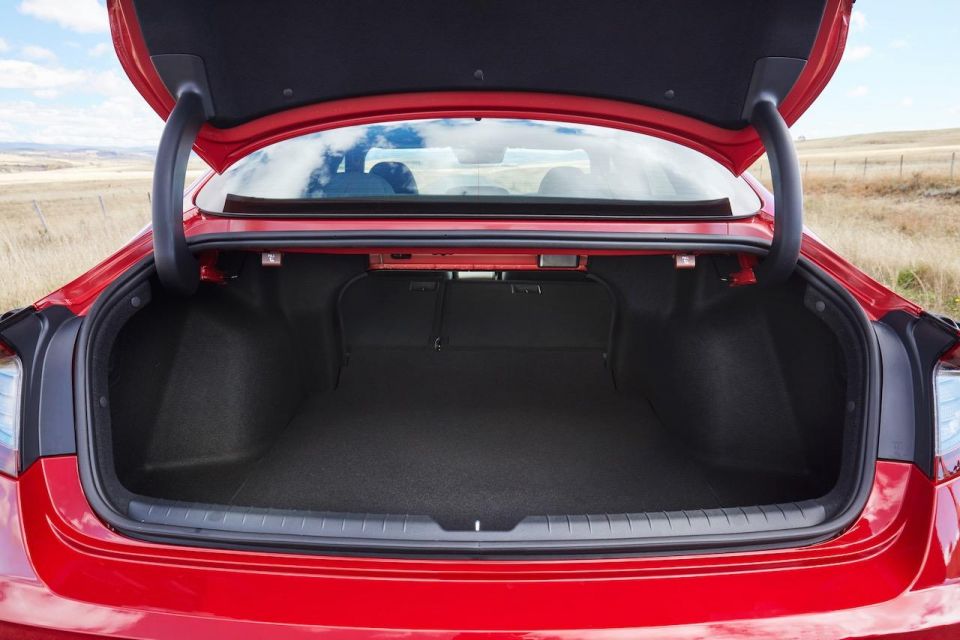
At just under five metres long there’s a stack of room for all passengers, along with the usual spaces for bottles, phones, keys and wallets.
Boot space is a claimed 510 litres, with a decently wide aperture, but large rear-wheel wells impede on that space if you need to carry wider objects.
There’s also the usual charging ports for both rows, two USB ports up front with an added 12V and wireless charging pad, as well as a single USB outlet out back at the rear of the centre console.
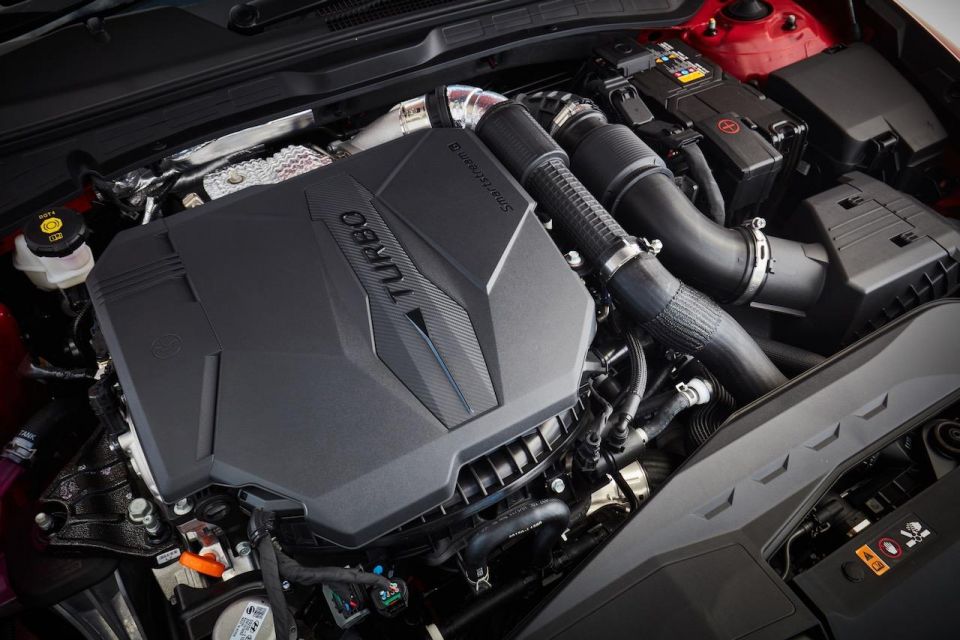
It’s the new Hyundai ‘SmartStream’ 2.5-litre turbocharged four-cylinder petrol engine making 213kW at 5800rpm and 422Nm of torque from 1650 to 4000rpm.
Drive goes to the front wheels exclusively, through an eight-speed dual-clutch (wet-type), the same gearbox as the upcoming full-strength i30 N hot hatch.
A version of this transmission is also used in the latest front-wheel drive versions of diesel Hyundai Santa Fe and Kia Sorento models.
For those who want to drill down a bit deeper, there are clever technologies at work here to make this powertrain perform more efficiently.

You’ll get used to Sonata’s push-button gear selection soon enough, but you might be surprised by its get-up-and-go, especially off the mark and in Sport+. Mind, there’s also Sport, Normal and Custom drive modes to choose from depending on the road conditions.
This thing is quicker than you might give it credit for, at least on paper.
We didn’t get the chance to plug-in a VBox for an accurate 0-100km/h test, but various sites in the USA have clocked 5.0-second launches from 0-60mph (0-97km/h), so 0-100km/h in 5.2-5.3 seconds would not be an unreasonable estimate.
We were, however, afforded the opportunity of a decent blast across some twisty country B-roads, with the Sonata’s point-to-point performance suitably impressive for a front-wheeler of such sizeable proportions.
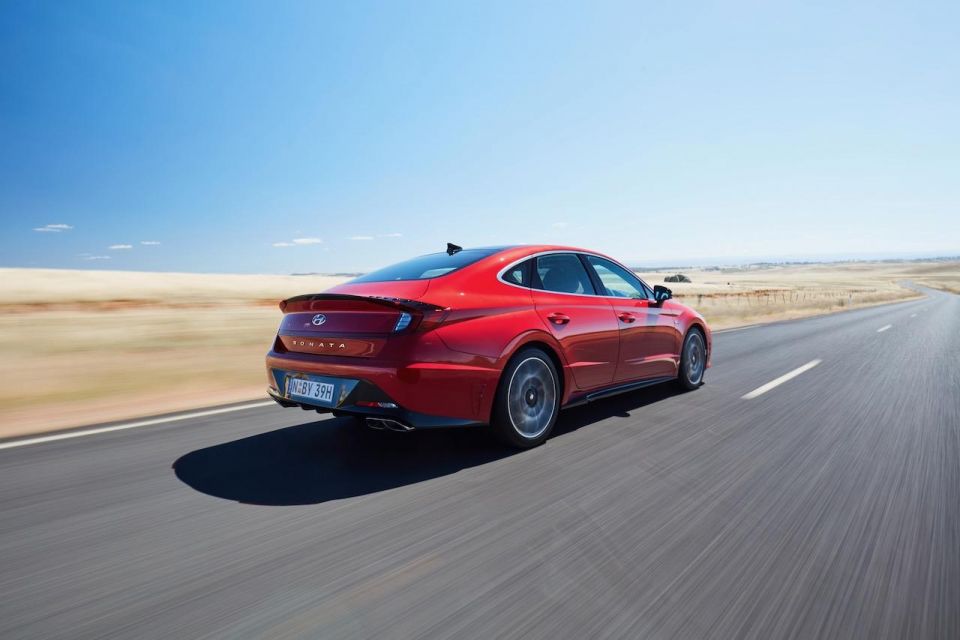
It’s the kind of performance that’s likely to get you thinking twice about the need to make the switch to a similarly-sized (and less-exhilarating) SUV. I guarantee you’ll like this more.
While initial throttle response is immediate with very little in the way of lag, it’s not overwhelming, more a linear approach to out-of-the-blocks acceleration. It’s not until you get into the mid-range when the turbo is at full noise for the Sonata N Line to really start to hammer along at real pace.
Hyundai’s dual-clutch transmission is a quick-shifting unit, and performs well enough under its own steam without the need for the driver to adopt the paddle shifters, though we tried that too. In Sport+ it responds well, but without the precision of the i30 N, which feels faster and more deliberate.
Even under power, while threading a few tight turns together, Sonata N Line feels light on its feet. At 1636kg at its heaviest it responds well to quick directional changes, helped along with a relatively fast steering ratio and ideal levels of power assistance.
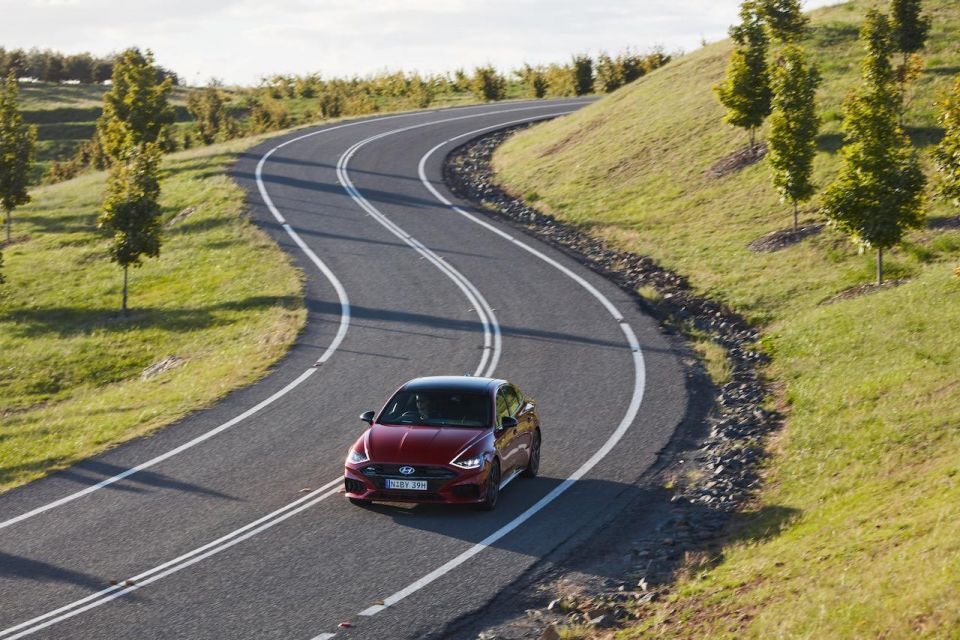
Where expert car reviews meet expert car buying – CarExpert gives you trusted advice, personalised service and real savings on your next new car.
If there’s a downside (there aren’t many), you’ll need a firm grip on the steering wheel rim itself, for torque steer that can afflict this car whenever you give it a decent boot out of tight corners.
I’d pay more for an AWD version if it were available, such is my disdain for that effect on front-wheel drive sedans with this much grunt because it’s been a while since we’ve had to deal with this issue.
Perhaps it was accentuated by the car’s high levels of grip, even on coarse chip rubbish, thanks to the quality Continental PremiumContact 6 rubber.
Body control is very reassuring, even when you’re carving up the bends at a good clip. What minimal body roll there is on turn-in has the effect of settling the chassis nicely, as you power out and onto the next one.
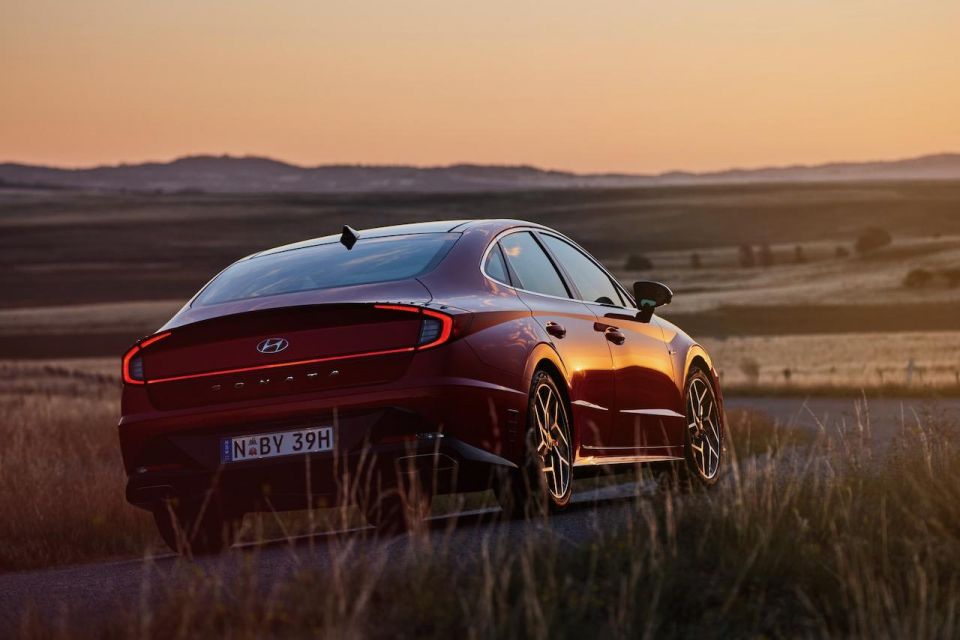
Put that down to more specific dynamic tuning for the Sonata N Line, using high-performance monotube dampers which, while stiffer overall, still offer good levels of ride comfort even on average road surfaces.
Just not as good, as say, the Skoda Octavia RS, which manages the balance between ride and handling better again using adaptive dampers. But the Sonata isn’t far off with its passive suspension set-up.
While the brakes aren’t particularly large (just 345mm front rotors), the pedal itself is reassuringly firm, with good feel to boot, even after a decent B-road workout with plenty of solid stabs.
On the highway, cruising at the maximum legal speed is simply effortless, as is passing at those speeds. You’ll want to dial up active cruise, flick to your favourite playlist, sit back, and enjoy Sonata’s comfort.
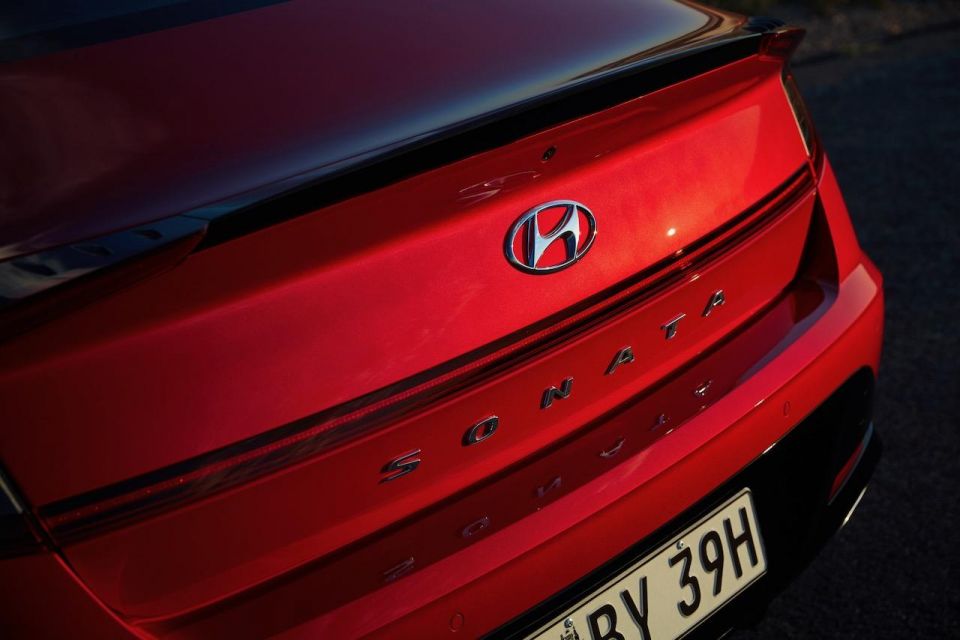
The 2021 Hyundai Sonata N Line is covered by the brand’s standard five-year, unlimited-kilometre warranty, along with complimentary roadside assist for 12 months.
However, if you choose to service with Hyundai dealers you’ll also receive a roadside support plan for up to 10 years, as well as a 10-year satellite navigation map update plan.
Service intervals are 12 months/10,000km (whichever comes first), with service costs capped at $350 for the first five years or up to 50,000km.
The Sonata N Line can run on 91RON regular unleaded, but is also E10 compatible with a 60-litre fuel tank.
Hyundai claims 8.1L/100km on the combined fuel cycle, but we saw upwards of 13.8L/100km during a varied road course, which included a good deal of spirited driving.

Buy your new car without the stress. It's fast, simple and completely free.

Great service from Travis and team, second time I have used this business would not hesitate to recommend them to anyone
Craig C.
Purchased a Ford Ranger in Sunshine Coast, QLD
CarExpert helped Craig save $7,224 on his Ford Ranger, now let us save you on your next new car.
Get your BEST priceIt may not be a full-tilt N car, but for many, the all-new Sonata N Line will be hot enough for Aussie road rules and conditions.
Moreover, at just over $50,000 before on-roads, it’s something of a bargain given the extensive list of features and standout design.
The Sonata N Line is a complete package at the right price, and well worth serious consideration for those that want more excitement from the family transporter.
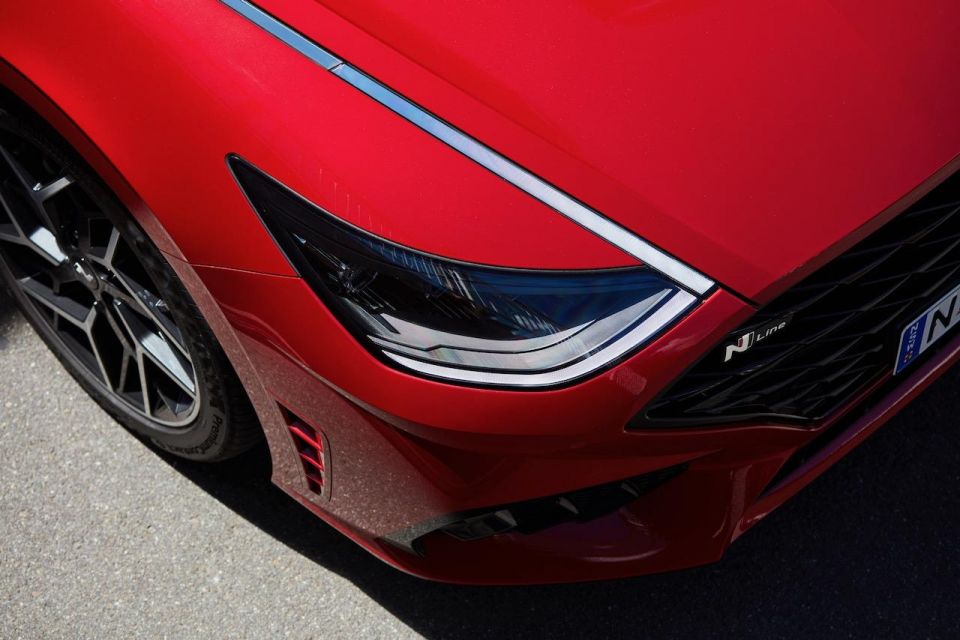
Click the images for the full gallery
Where expert car reviews meet expert car buying – CarExpert gives you trusted advice, personalised service and real savings on your next new car.


Max Davies
6 Days Ago


Josh Nevett
4 Days Ago


Max Davies
4 Days Ago


Max Davies
3 Days Ago


Neil Briscoe
2 Days Ago


Max Davies
1 Day Ago